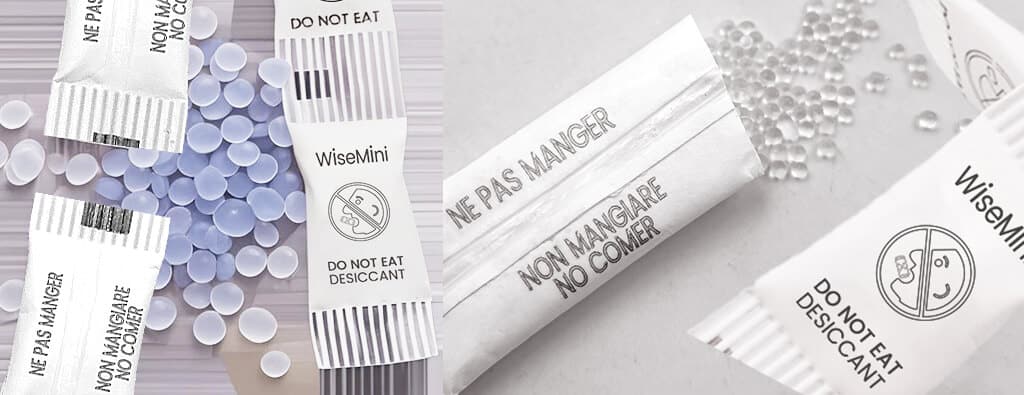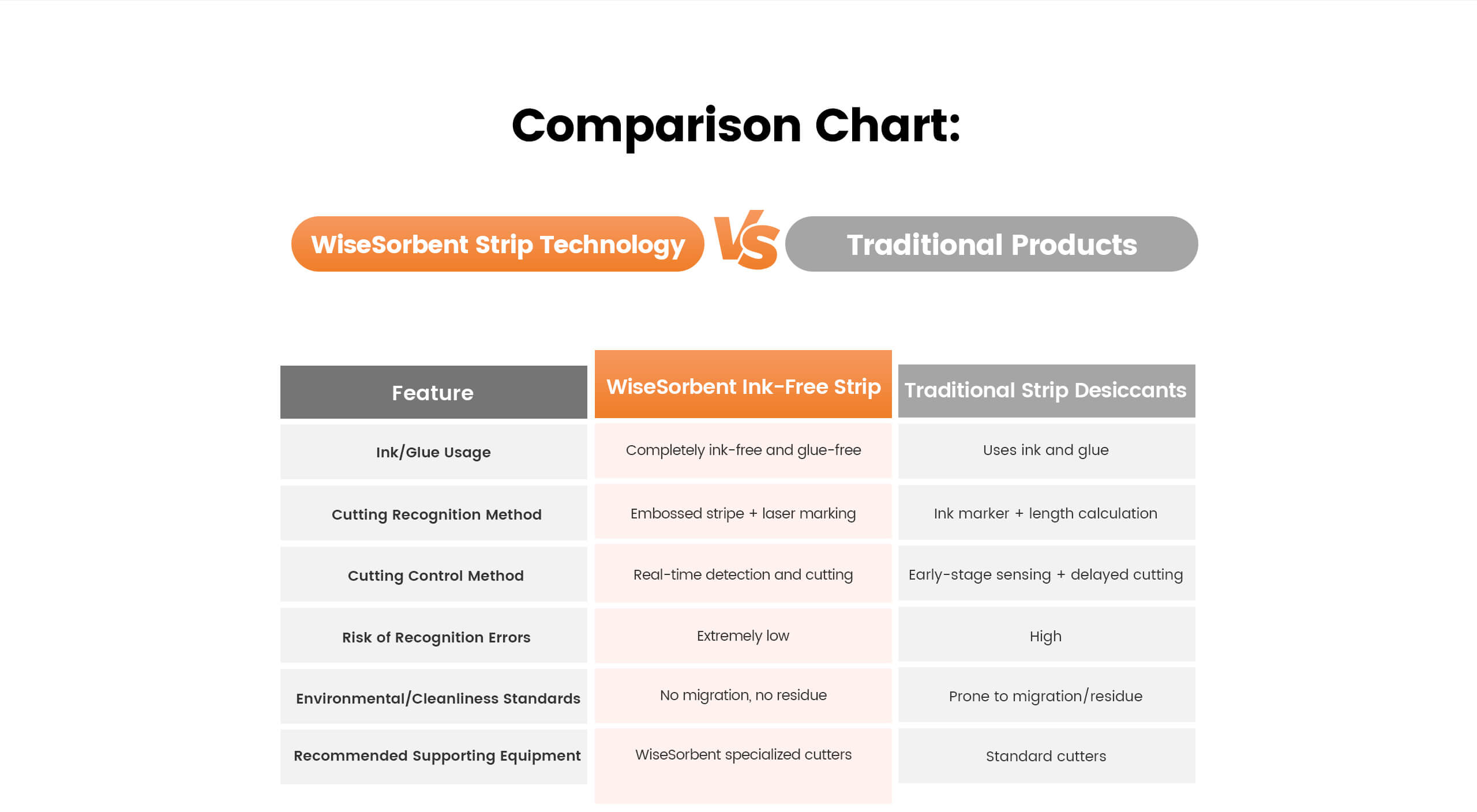- Products
- Polymer Desiccant
- About
- ESG
- Knowledge
Healthcare
Healthcare
Food

As industries such as pharmaceuticals, food, and health supplements increasingly prioritize moisture control, odor prevention, and clean packaging environments, the use of desiccants has become a standardized process in many packaging production lines. In the era of accelerated supply chain automation and intelligence, strip-type desiccants for automatic insertion are also becoming the mainstream solution due to their convenience and efficiency.
Compared with flexible single-pack forms, strip desiccants can seamlessly integrate with high-speed automatic pouching machines for continuous feeding and automatic cutting. This significantly reduces manual intervention and operational errors, improving production efficiency while minimizing labor costs and foreign object risks. While single-packs remain stable in certain scenarios, strips are increasingly favored on modern production lines pursuing takt time optimization and stable output.

Despite the rapid adoption of strip desiccants and their outstanding advantages in automation adaptation, several technical bottlenecks affecting efficiency and safety have emerged during practical use, mainly in the following areas:

Traditional strip desiccants often use ink printing at cutting points or for label information, and adhesive bonding during the production process. In actual high-speed production, factors like cutter heat can cause ink shedding or chemical migration/residue. In industries such as food and pharmaceuticals, where strict packaging contact safety is required, these risks could compromise product quality. Therefore, minimizing residual chemicals from inks and adhesives has become a critical factor when selecting desiccant products.
Traditional strip desiccants often use ink printing at cutting points or for label information, and adhesive bonding during the production process. In actual high-speed production, factors like cutter heat can cause ink shedding or chemical migration/residue. In industries such as food and pharmaceuticals, where strict packaging contact safety is required, these risks could compromise product quality. Therefore, minimizing residual chemicals from inks and adhesives has become a critical factor when selecting desiccant products.

WiseSorbent ‘s Three Key Optimizations for Ink-Free & Glue-Free Strip Desiccants
To address the safety and recognition challenges associated with traditional strip desiccants, WiseSorbent has launched three major technical upgrades:



WiseSorbent adopts new eco-friendly materials and bonding techniques, completely eliminating the use of inks and adhesives. Even under high-speed, high-temperature cutting conditions, there is no risk of ink migration or glue residue. This ensures zero chemical contamination, fully meeting the stringent cleanliness and safety requirements of pharmaceutical and food packaging industries.


Unlike traditional printed marker boxes, WiseSorbent uses a “physical embossed stripe” as the primary position indicator. This physical marker offers superior light transmission consistency, making it less affected by ink density or ambient light — enabling faster and more reliable detection by vision systems. Additionally, a “laser marking” option is available, supporting both single and dual detection modes, enhancing detection sensitivity while maintaining visual aesthetics and product harmony.
WiseSorbent’s strip desiccants are deeply optimized for equipment integration, enabling “real-time recognition and cutting” without relying on traditional pre-recognition plus length calculation models. Each cut point is accurately detected and executed immediately, eliminating issues caused by length tolerances or transport delays.
We strongly recommend using WiseSorbent’s dedicated cutting machine together with the strip desiccants to achieve the best match between product and equipment, ensuring high-precision recognition and cutting, and supporting efficient, stable production lines.

WiseSorbent’s ink-free and glue-free strip desiccant technology is now in mass production and compatible with major high-speed automatic packaging machines, demonstrating excellent feeding and recognition stability. Moving forward, as industries demand even higher cleanliness, safety, and stability from packaging materials, WiseSorbent will continue to optimize this technology and expand its application across different product lines.
If you are currently facing challenges such as recognition errors, ink migration, or glue residue when using strip desiccants, feel free to contact us for sample testing support or technical adaptation consultations.
WiseSorbent is committed to delivering safer and more precise desiccant solutions for every efficient production line.